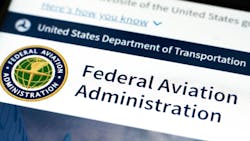Brett Levanto Explains the FAA’s New Rules on Falsification
Key Highlights
- The FAA’s new rule consolidates falsification regulations into a single subpart D, effective November 2025, but the core prohibitions against intentional false statements remain unchanged.
- Prohibitions include making fraudulent or intentionally false statements, altering documents for fraudulent purposes, and knowingly omitting material facts in compliance-related documents.
- Maintenance personnel should review the criteria for intentional falsification, including knowledge of falsity and intent to deceive, to ensure compliance and avoid enforcement actions.
“Honesty is such a lonely word
Everyone is so untrue
Honesty is hardly ever heard
And mostly what I need from you”
~ Billy Joel
In September, the FAA channeled Billy Joel in its final rule consolidating the many falsification-related sections across 14 CFR into the new part 3, subpart D.
The songwriter’s quest for honesty, set off in a search for “tenderness,” is less rooted in legality than the agency’s prohibitions against:
- Intentionally false statements
- Productions or alterations for fraudulent purposes
- Knowing omissions of information from certain documents
However, just like Joel doesn’t want “some pretty face to tell [him] pretty lies,” the FAA needs “someone to believe” in the basic definitions surrounding falsification and fraud.
The new rule—effective in November 2025—changes nothing of substance familiar to maintenance personnel. ARSA and multiple industry allies released a statement on the notice of proposed rulemaking to head off the FAA’s overzealous attempt to make “honest mistakes” the subject of enforcement action.
What remained in the final rule was a standard set of prohibitions against intentionally false or fraudulent actions and a tepid admonition against “incorrect” information.
How the new rule compares to the old rule
The FAA’s new rule differs from the previous rule covering falsification by mechanics, repairmen and repair stations.
One section of the new rule states:
(a) No person may make or cause to be made any fraudulent or intentionally false statement in:
(1) Any document in any format, submitted under any provision referenced in §3.401, consisting of or related to any acceptance, application, approval, authorization, certificate, rating, declaration, designation, qualification, record, report, request for reconsideration, or similar; or
(2) Any document in any format that is kept, made, or used to show compliance with any requirement under the provisions referenced in §3.401.
In contrast, the previous version of this rule prohibits a person subject to part 145 from “mak[ing] or caus[ing] to be made…any fraudulent or intentionally false entry” in an application or any other record made or kept to show compliance.
Another section of the new rule stipulates:
(b) No person may make or cause to be made any production, reproduction, or alteration, for fraudulent purpose, of:
(1) Any document in any format, submitted or granted under any provision referenced in §3.401, consisting of or related to any acceptance, application, approval, authorization, certificate, rating, declaration, designation, qualification, record, report, request for reconsideration, or similar; or
(2) Any document in any format that is kept, made, or used to show compliance with any requirement under the provisions referenced in §3.401.
According to subchapters two and three of another section of the old rule, people subject to part 145 are prohibited from making alterations or reproductions “for fraudulent purpose, of any application (including any document used in support of that application), record, or report.”
Touching on omission, the new rule states:
(c) No person may knowingly omit, or cause to be omitted, a material fact in:
(1) Any document in any format, submitted under any provision referenced in §3.401, consisting of or related to any acceptance, application, approval, authorization, certificate, rating, declaration, designation, qualification, record, report, request for reconsideration, or similar; or
(2) Any document in any format that is kept, made, or used to show compliance with any requirement under the provisions referenced in §3.401.
From the old rule, §145.12(b) prohibits any person from “knowingly conceal[ing] or caus[ing] to be concealed” a material fact by omission in an application or any other record made or kept to show compliance.
Similarly, §65.20(a) from the old rule prohibits any person from making or causing to be made fraudulent or intentionally false statements on applications or records as well as reproductions for fraudulent purposes or any alteration of any certificate or rating issued under Part 65.
The next section of the FAA’s new rule says:
(d) The commission by any person of an act prohibited under paragraphs (a) through (c) of this section is a basis for:
(1) Denying, suspending, modifying, revoking, rescinding, removing, or withdrawing any acceptance, application, approval, authorization, certificate, rating, declaration, designation, qualification, request for reconsideration, or similar, issued or granted by the Administrator and held by that person; or
(2) A civil penalty.
The old rule’s §145.12(c) states that intentionally false or misleading acts defined by the section can be the basis for any denial of an application or approval, certificate suspension or revocation, or civil penalty.
§65.20(b) stipulates that the commission of a false or misleading act is a basis for suspension or revocation of any airman or ground instructor certificate held by that person. As in the new §3.403(d), this action could be taken against any certificate and not just the one in use during the related action.
How to prepare for the new rule
Secure in the knowledge that the new subpart in part 3 does not change the prohibitions previously included in parts 65 or 145, those “persons” subject to the falsification rules should refresh themselves on the legal standard of what constitutes “intentionally false” and fraudulent. Doing so requires the layman to quickly refer to criteria listed in a pair of proceedings.
In a 1942, the U.S. Supreme Court referenced the “necessary elements of the defense of fraud” with citations to decisions in multiple cases:
(1) A false representation
(2) in reference to a material fact
(3) made with knowledge of its falsity
(4) with the intent to deceive
(5) with action taken in reliance upon the representation
In a 1976 court case, the U.S. Court of Appeals for the Ninth Circuit concluded that the elements of an intentionally false statement are the first three elements of fraud: falsity, materiality, and knowledge.
The case notes, “Thus, intentional false statement is a lesser included offense within fraud. Thus, for both offenses, the person making the false entry must know of such falsity. However, fraud requires at least one additional element, i.e. an intent to deceive.”
What about accidental errors in paperwork?
Paperwork errors alone do not create enforcement-worthy violations. To falsify a record means knowing the entry or statement is false at the time it is made (i.e. having actual knowledge). Realizing an error after the fact, whatever the cause, does not constitute intentional falsification. Documents can be corrected after the discovery of such errors, with corrections noted.
Though the final rule includes language regarding incorrect but not intentionally false statements, the agency softened the language in §3.405 to avoid strict liability. The rule states, “[it] instead allows FAA to take appropriate remedial action tailored to the circumstances surrounding the incorrect statement or omission.”
In aerospace regulatory compliance, honesty really isn’t a lonely word. Prohibitions against intentional falsification, paired with quality system recordkeeping requirements, make clear and accurate documentation a key element of safety.
The FAA’s recent consolidation of its many falsification rules into a single subpart has changed little for maintenance personnel other than where to find the rule.
About the Author
Brett Levanto
Brett Levanto is vice president of operations of Obadal, Filler, MacLeod & Klein, P.L.C. managing firm and client communications in conjunction with regulatory and legislative policy initiatives. He provides strategic and logistical support for the Aeronautical Repair Station Association.

